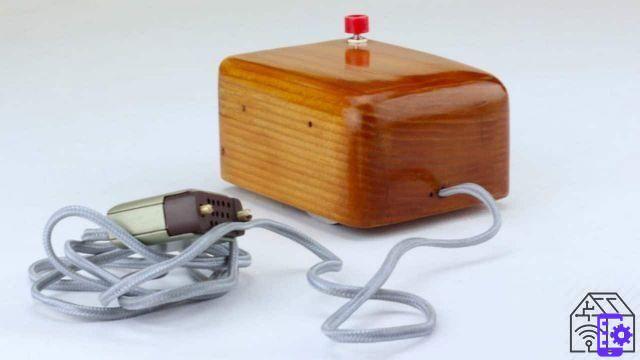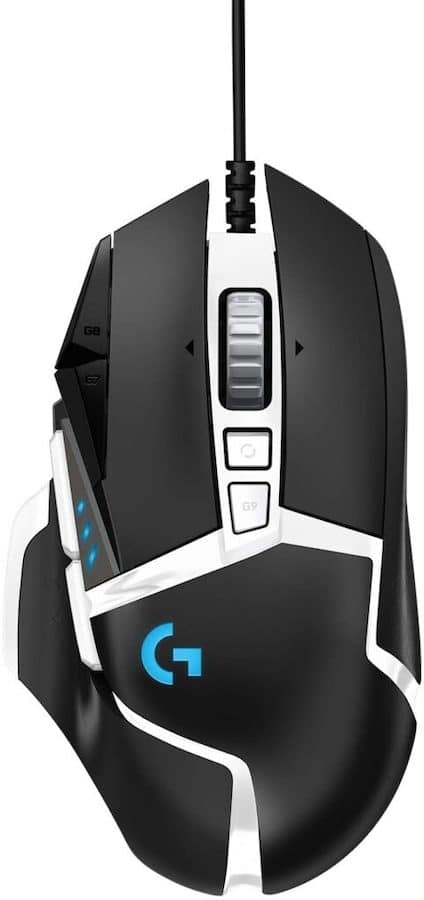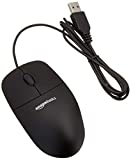
Let's find out how the mouse has changed over the decades. The pointing device has changed and evolved in close relationship with the ever new technological approaches (and the aesthetic fashions of the moment).
There is no unanimity on his date of birth or absolute agreement on the name, but no one can question its indispensability.

What is the mouse
We all know what the mouse is. But what if we try to define it? It is not easy to do it precisely.
A mouse is a portable pointing device connected variously to the computer. Thanks to a series of buttons and wheels which, depending on the model, have different functions, the mouse moves the cursor on the monitor. And thus allows immediate interaction between the operator and the computer.
It goes without saying that its name derives from the object's similarity to a mouse.
Not everyone is a mouse
The word mouse, like the word computer, has managed to convince even the most intransigent defenders of the native language almost all over the world., and it has been accepted almost everywhere.
Yet in France it is also called souris (on the other hand, the French refer to the computer with the word ordinateur).
Another linguistic quirk concerns Italy: almost everywhere the word mouse is translated (becoming, for example, ratón in Spanish and Maus in German). While here, exceptionally, the word remains faithful to the original English. And the mouse controversies don't end there.

How the mouse has changed. But first of all, when was he born?
Before discovering how the mouse has changed, let's try to identify its birth. And this too is not a very simple operation, because there is no unanimity.
The American Douglas Engelbart is now officially recognized as the inventor of the mouse, who would develop the project together with seventeen colleagues from the Augmentation Research Center. The first prototype is from 1964, the patent from 1967 and the first public demonstration dates back to the following year.
It was a rudimentary pointer: a wooden box containing a printed circuit board and two large metal wheels, surmounted by a big red button. Thanks to its rounded shape and the "tail" that protruded from the box, it was immediately renamed mouse.
Still, a first crude pointer model seems to have already been developed for military purposes. It was done in 1952 by Canadians Tom Cranston, Fred Longstaff and Kenyon Taylor for the Royal Canadian Navy.

How the mouse has changed: the early years
The invention of the mouse was ahead of its time, so to speak, since the boom in personal computers would explode long after the patent was issued..
Which will in fact be licensed to Apple for only $ 40.000. Steve Jobs' company in 1983 will launch the Lisa, a personal computer with an interface based on mouse, icons and windows: for those times, a revolution.
But let's go back nine years: we are in 1974, and here comes the trackball, which finally allows you to also make diagonal movements.
Another turning point was 1981, when Xerox introduced the world to the Xerox Star. This (very expensive) computer, whose real name was Xerox 8010 Information System, consisted of a series of workstations connected to each other via LAN. And above all, it was the first computer in history based on the WIMP interaction system, acronym for Window, Icon, Menu and Pointing device (in Italian Window, Icon, Menu and Pointer).
Or rather, the Star was the first computer with these characteristics to be put on sale: as early as 1973 the Xerox Alto had been worked on, but it was never marketed.
However, if the young Steve Jobs was able to create the Lisa first and then the legendary Macintosh, it is also because he allowed himself a visit to the Xerox PARC in Palo Alto together with his technicians.
How the mouse has changed: Macintosh and Logitech
Mice burst into the homes of personal computer owners starting in 1984, with the Macintosh boom. And with the entry on the market of Logitech, which in those years launched the first pointers equipped with optical sensors.
Later the mouse was also adopted by Microsoft and IBM, and its cost continues to drop.

Since the nineties of the twentieth century
Since the XNUMXs, the mouse has followed increasingly sophisticated ergonomic criteria. In 1990, Windows 3.0 caused the Microsoft phenomenon to explode globally, and the mouse becomes the emblem of anyone with a personal computer.
In 1996 it was the turn of the central wheel for the scroll function. The next year a side thumb button is added in some models, which won't have a great future.
From the XNUMXs to today
The rest is recent history, with the emergence of ever more precise laser optical mice (the first model, from 2004, is from Logitech).
In 2009 Apple offers the public the very stylish Magic Mouse, from the surface without buttons but multitouch. In November of the previous year, Logitech had produced its billionth mouse. And in recent years the most avid gamers have preferred wired mice, extremely fast and sensitive.
 Amazon Basics - Black Optical Mouse with USB and 3 Buttons for ...
Amazon Basics - Black Optical Mouse with USB and 3 Buttons for ...
- USB mouse with 3 buttons: precise, fast and practical
- High definition optical tracking (1.000 dpi) allows immediate cursor control to locate and ...
- Dimensions: 10,1 x 6 x 3,4cm approx, with 1,5m cable
The future of the mouse
After seeing how the mouse has changed (little, after all) the question remains: what will become of him?
The threats are more than one: the touchpad, the touchscreen and the futuristic gesture control, i.e. the detection of finger movements via the camera. So, should we users really give up those unforgettable aches in the right hand?
Dear old mouse, hold on!




















![[Review] Samsung Powerbot VR7000: the robot vacuum cleaner from Star Wars](/images/posts/6bc44de38605b5c0fa12661febb1f8af-0.jpg)





